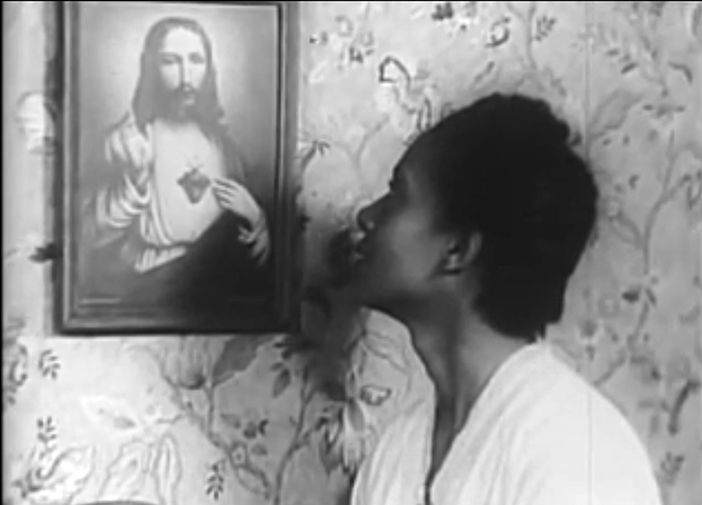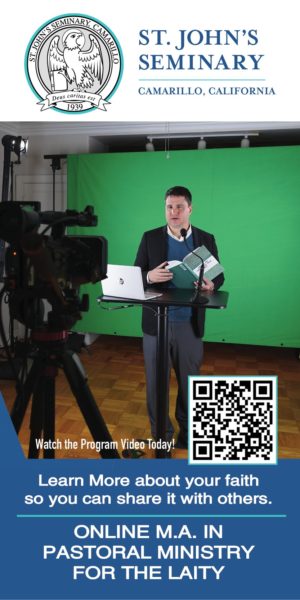“The Blood of Jesus” (1941, 57 min.), written and directed by Spencer Williams, became the first “race film” to be added to the U.S. National Film Registry. Time magazine included it among its list of “25 Most Important Films on Race.”
At a recent screening at REDCAT, Jacqueline Stewart, professor in the department of cinema and media studies at the University of Chicago, provided some further background.
Williams — about whom Stewart is writing a biography — achieved popular success as the actor who played Amos on the “Amos ‘n’ Andy” show. Along with the better-known Oscar Michaeux, he is also a notable figure in early black film-making.
Born circa 1893 in Vidalia, Louisiana, Williams studied mechanics and engineering and served in the military. He landed in Hollywood at the tail end of the silent era and worked as a sound technician and script doctor before he began directing around 1928. Writing followed: “Harlem Rides the Range” and “Son of Ingagi,” billed as the first black-cast horror movie, are among his early credits.
He directed “The Blood of Jesus” in 1941 after securing funding from the Jewish producer Alfred N. Sack. The Village Voice’s J. Hoberman called it “a masterpiece of modern cinema that has scarcely lost its power to astonish.” Stewart spoke of a “layered aesthetic that reflects multiplicities of content, form and style.”
Maybe, but let’s be clear: Low budget would be an understatement. The film, a story of sin and redemption shot in Texas, was produced on five grand and at times called to mind “Plan 9 From Outer Space” (I mean that as a compliment).
It’s all here: the trope of the fallen woman, the saints, the gospel hymns: “Swing Low, Sweet Chariot,” “Go Down, Moses,” “Were You There When They Crucified My Lord,” sung by Reverend R.L. Robinson’s heavenly choir (several members did double duty as actors).
The plot is roughly as follows: Down by the river, Martha (Cathryn Caviness) gets baptized. Her new husband Ras (Spencer Williams), an atheist, spends the day hunting. Back home, his rifle accidentally discharges. The bullet goes straight through both Martha and a dime-store image of Jesus that hangs on the wall, striking just beneath the Sacred Heart. Martha, arrayed in white, lies abed, possibly dying. The neighbors come to sing, kneel and pray. Ras, distraught, wrings his hands, stares out the window, and begins to pray himself.
An African American angel leads Martha’s spirit on a journey. Their first stop is the local cemetery. Sample voiceover, backed by throbbing organ music:
“This is the end of the trail. Here, all is silent, save for the murmurs of grief and the muffled sobs of those who have long since departed from the land of the living.”
Martha stands at the crossroads of heaven and hell. She’s tempted by Satan and one of his minions, offered a job at a roadhouse floorshow, and accused by a customer of robbing him. A mob pursues her, the angel appears, and as Martha writhes moaning on the ground in a white satin gown, the blood of Jesus begins dripping on her face.
Martha comes to. Miraculously, she’s at home, alive and well. Ras has found religion. The angel appears one last time to bless the marriage.
As Stewart summed up: “Striking, if not downright weird.”
Indeed. Williams scratched the emulsion in order to give the effect of gunfire, incorporated actual footage from a 1911 Italian film called “L’Inferno,” and clearly refrained from splurging on the costumes.
Still, the baptismal scene, with white-garmented subjects being solemnly dunked in the river, has a crude power. An angel in white, Satan in black, a ladder climbing gauzily to heaven, gossiping neighbors, lustful men, suffering women, the golden gates of paradise: snicker all you want, but look back at your day and see if those exact elements didn’t shadow and inform it.
The film was billed as “a mighty epic of modern morals” and played to great acclaim in churches, dance halls and theaters across the South for a number of years.
The great Catholic southern novelist and short story writer Flannery O’Connor would have recognized the character and themes as very much her own: “My subject in fiction is the action of grace in territory largely held by the devil,” she observed.
“When you can assume that your audience holds the same beliefs as you do, you can relax a little and use more normal means of talking to it; when you have to assume that it does not, then you have to make your vision apparent by shock; to the hard of hearing you shout, and for the almost-blind, you draw large and startling figures.”
Long after the screen went dark, a single image remained in my own mind’s eye: a stark wooden cross, raised aloft. One side, with an arrow pointing left, reads “To Hell.” Opposite, the arrow beckons right: “To Zion.”

